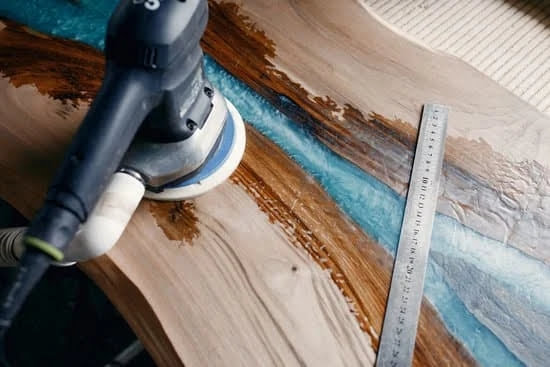When did woodworking begin in Egypt? The ancient civilization of Egypt is renowned for its remarkable achievements in architecture, art, and craftsmanship. One of the essential crafts in ancient Egypt was woodworking, which played a crucial role in shaping the society and culture of that time. This article explores the origins, development, and significance of woodworking in ancient Egypt, shedding light on the legacy that continues to impact the modern world.
Woodworking has been an integral part of human history since the earliest civilizations, and Egypt is no exception. Ancient Egyptian woodworking dates back to the earliest periods of their civilization, with evidence of wooden artifacts and structures found in archaeological sites. The use of wood and the mastery of woodworking techniques were key elements in shaping the material culture of ancient Egypt.
The development of woodworking in ancient Egypt reflects not only technological advancements but also cultural influences from neighboring societies. Different periods in Egyptian history saw advancements in woodworking techniques, tools, and designs, showcasing the innovative nature of this craft within the society. The influence of other cultures on Egyptian woodworking also contributed to its evolution over time, creating a rich tapestry of artistic expression and craftsmanship.
Origins of Egyptian Woodworking
The origins of woodworking in Egypt can be traced back to the early evidence found in ancient Egyptian civilization. The use of wood as a material for constructing various items dates back to around 2500 BC. It is evident that the ancient Egyptians possessed an advanced knowledge of woodworking techniques and tools, which can be seen in the intricate designs and craftsmanship found in artifacts from this time period.
Tools such as saws, chisels, axes, adzes, and drills were commonly used by ancient Egyptian woodworkers. The use of copper and bronze tools also played a significant role in woodworking during this time. These tools allowed for precise carving, shaping, and assembly of wooden objects, showcasing the skill and expertise of ancient Egyptian woodworkers.
The ancient Egyptians primarily used local wood species such as acacia, sycamore fig, tamarisk, and cedar for their woodworking projects. These woods were utilized in construction for building houses, crafting furniture such as chairs and beds, as well as creating intricate wooden artifacts for religious and ceremonial purposes. Additionally, wood was also used in boat construction due to its durability and buoyancy properties.
- Early evidence of woodworking in Egypt
- Tools and techniques used in ancient Egyptian woodworking
- Types of wood commonly used in Egyptian woodworking
Woodworking played a vital role in ancient Egyptian society, providing essential materials for everyday life while also holding symbolic significance within their culture and religion. The advancements made in woodworking during this time period set the stage for its continued development throughout different periods of Egyptian history.
Overall, the origins of Egyptian woodworking are rooted in a rich history that continues to fascinate archaeologists and historians today.
Development of Woodworking in Egypt
The development of woodworking in Egypt was a significant aspect of the ancient civilization’s technological and artistic advancement. Woodworking in Egypt can be traced back to as early as the Neolithic period, around 5000 BC, when evidence of wooden artifacts such as furniture, tools, and other objects have been unearthed by archaeologists. The use of wood in construction and craftwork played a crucial role in shaping Egyptian society and culture.
Advancements in Woodworking During Different Periods of Egyptian History
Throughout different periods of Egyptian history, woodworking techniques and tools continued to evolve. During the Old Kingdom (2686-2181 BC), there was an increased focus on building monumental structures such as temples and pyramids, which required advanced woodworking skills for construction and ornamentation. The Middle Kingdom (2055-1650 BC) saw further developments in woodworking, with intricate furniture pieces found in tombs indicating a high level of craftsmanship.
The New Kingdom (1550-1070 BC) brought about even more advancements in woodworking, as evidenced by the elaborately decorated wooden coffins and funerary objects found in royal tombs. The level of detail and artistry in these wooden artifacts reflects the mastery achieved by Egyptian woodworkers during this period.
Influence of Other Cultures on Egyptian Woodworking
While ancient Egyptian woodworking had its own distinct style and techniques, it was also influenced by contact with other cultures through trade and conquest. The interaction with Mesopotamia, Phoenicia, Greece, and other neighboring civilizations introduced new ideas and technologies to Egyptian craftsmen, leading to the exchange of knowledge and the adoption of innovative methods in woodworking. This cross-cultural exchange enriched the practice of woodworking in Egypt, contributing to its continuous development over millennia.
As woodworking techniques evolved over time, so did the significance of wood within ancient Egyptian society. Woodworking became not only a practical necessity but also a symbol of status, wealth, and religious beliefs. The legacy of this rich tradition continues to fascinate scholars and enthusiasts today as they explore the lasting impact of Egyptian woodworking on artistry and craftsmanship worldwide.
Woodworking in Ancient Egyptian Society
The ancient Egyptians were skilled woodworkers, with evidence of woodworking dating back to as early as 3000 BCE. The use of woodworking was vital to their society as it played a crucial role in everyday life, construction, and religious practices. Woodworking not only provided essential items for daily living but also held significant symbolic meaning within Egyptian culture.
Role of Woodworking
Woodworking was an essential part of ancient Egyptian society, providing the necessary tools, furniture, and other items for daily use. Its importance can be seen in the construction of homes, temples, boats, and furniture. Additionally, woodworking played a critical role in the creation of various religious artifacts and funerary goods used in burial practices. Without the skills and techniques developed by ancient Egyptian woodworkers, many aspects of their society would not have been possible.
Symbolism of Wood
In ancient Egyptian culture and religion, wood held great symbolic significance. Certain types of wood were associated with different deities and religious rituals. For example, the acacia tree was considered sacred and was used to create ritual objects for honoring gods such as Osiris.
Additionally, the use of wooden coffins and funerary goods reflected the belief in the afterlife and the journey to the underworld. Woodworkers were not only craftsmen but also played a role in upholding religious traditions through their creations.
Legacy in Modern World
The impact of woodworking in ancient Egypt is still felt today. The techniques and craftsmanship developed by ancient Egyptian woodworkers have influenced later civilizations and continue to inspire modern artisans. Furthermore, the preservation and study of wooden artifacts from ancient Egypt provide valuable insights into their society, technology, craftsmanship, and cultural beliefs. The legacy left by these master woodworkers is a testament to their skillful artistry that continues to captivate people around the world.
The Importance of Wood in Ancient Egypt
Wood played a vital role in the ancient Egyptian civilization, with its use extending across various aspects of daily life. The importance of wood in ancient Egypt can be seen in its significance in construction, furniture-making, and other crafts. Evidence of woodworking in ancient Egypt dates back to as early as 3000 BCE, showcasing the rich tradition and craftsmanship of this ancient culture.
Various types of wood were commonly used in Egyptian woodworking, including acacia, sycamore fig, and tamarisk. These types of wood were valued for their durability and versatility, making them suitable for a wide range of applications. Wood was utilized in construction for building houses, ships, and coffins, demonstrating its essential role in the structural development of Egyptian society.
In addition to construction, woodworking also played a crucial role in furniture-making and other crafts. Skilled artisans carved intricate designs into wooden furniture pieces such as chairs, tables, chests, and beds. Moreover, wood was used to create intricate statues and sculptures that held religious significance for the ancient Egyptians. The craftsmanship displayed in these wooden artifacts reflects the high level of expertise achieved by Egyptian woodworkers during this time period.
Master Woodworkers and Their Work
Woodworking has been an integral part of ancient Egyptian civilization, with evidence dating back to as early as 3000 BCE. The use of woodworking in Egypt was not only for practical purposes but also held deep cultural and religious significance. When did woodworking begin in egypt? It can be traced back to the earliest periods of ancient Egyptian history, with the ancient Egyptians making use of various tools and techniques to master the art of working with wood.
Some of the earliest evidence of woodworking in Egypt comes from artifacts such as furniture, statues, and other wooden objects discovered in tombs and archaeological sites. These artifacts have provided valuable insight into the tools and techniques used by ancient Egyptian woodworkers. It is evident that these craftsmen were highly skilled and knowledgeable, often using chisels, adzes, bow drills, and other specialized tools to create intricate wooden pieces.
One notable period of advancements in Egyptian woodworking occurred during the New Kingdom (1550-1070 BCE). This era saw a surge in monumental construction projects, leading to innovations in architectural woodworking. Skilled carpenters and woodworkers were crucial in building grand temples, elaborate funerary monuments, royal barges, and intricately decorated furniture. The influence of other cultures such as the Greeks also brought new techniques and designs to Egyptian woodworking during this time.
Decline of Woodworking in Egypt
Woodworking declined significantly in ancient Egypt during the Greco-Roman period, which began in 332 BC after Alexander the Great’s conquest of the region. This decline was primarily due to the introduction and influence of new cultures and technologies, particularly from Greece and Rome.
These foreign influences led to changes in artistic and architectural styles, as well as a shift towards different materials such as marble and stone for construction and sculpting. Additionally, the increased use of metal tools and techniques also played a role in the decline of woodworking as a prominent craft in Egyptian society.
Another major factor that contributed to the decline of woodworking in ancient Egypt was the dwindling availability of high-quality wood. The deforestation of certain regions, coupled with the limited supply of imported wood, made it increasingly difficult for woodworkers to obtain the materials they needed for their craft. As a result, other materials like stone, clay, and metal became more prevalent in various aspects of Egyptian life, further diminishing the demand for traditional woodworking skills.
Despite its decline, woodworking continued to hold cultural significance in ancient Egypt until the end of its civilization. Wooden artifacts remained an important part of funerary practices and religious rituals, emphasizing the enduring impact that woodworking had on Egyptian culture even during its waning years.
| Factors | Effects |
|---|---|
| Influence of new cultures and technologies | Changes in artistic styles; shift towards different materials |
| Dwindling availability of high-quality wood | Increased difficulty for woodworkers to obtain materials; rise of other materials like stone, clay, and metal |
| Cultural significance | Wooden artifacts remained important in funerary practices and religious rituals |
The Legacy of Egyptian Woodworking
Woodworking in ancient Egypt has left a lasting legacy that continues to be appreciated and studied today. The craftsmanship and creativity of Egyptian woodworkers have greatly influenced later civilizations, particularly in the field of woodworking and craftmanship. The intricate designs, skillful techniques, and sophisticated tools used by ancient Egyptian woodworkers have set a standard for craftsmanship that is still admired and revered in the modern world.
One of the most notable legacies of Egyptian woodworking is its influence on the development of woodworking in other cultures. The advanced techniques and designs used by ancient Egyptian woodworkers were not only admired but also adopted and adapted by neighboring civilizations.
The use of intricate joinery, elaborate carvings, and expertly crafted furniture became an inspiration for craftsmen across the Mediterranean region and the Near East. This influence can be seen in the architecture, furniture, and decorative arts of cultures such as Greece, Rome, Persia, and Assyria.
Furthermore, the preservation and study of ancient Egyptian wooden artifacts have provided valuable insights into the techniques, tools, and materials used by woodworkers in ancient Egypt. By analyzing these artifacts, researchers have been able to gain a deeper understanding of the skills and methods employed by ancient Egyptian woodworkers.
This has not only shed light on the technological achievements of ancient Egypt but has also helped to inspire contemporary woodworkers who seek to emulate the precision and artistry of their ancient counterparts.
Conclusion
In conclusion, woodworking has been a crucial and enduring part of ancient Egyptian civilization. The origins of Egyptian woodworking can be traced back to early evidence of wood carving and construction, with the use of primitive tools and techniques. As advancements in woodworking evolved throughout different periods of Egyptian history, the influence of other cultures also played a significant role in shaping the craft.
Woodworking held immense importance in ancient Egyptian society, not only for practical purposes such as construction and furniture making, but also for its symbolism in their culture and religion. The types of wood commonly used in Egyptian woodworking were carefully chosen for their durability and aesthetic qualities, leading to the creation of remarkable artifacts that have stood the test of time.
The legacy of Egyptian woodworking continues to impact the modern world, as the influence of ancient Egyptian woodworking on later civilizations can still be seen today. Although there was eventually a decline in woodworking in Egypt with the replacement of wood by other materials, the preservation and study of ancient Egyptian wooden artifacts allow us to appreciate and learn from this remarkable craft.
Overall, the significance of woodworking in ancient Egypt cannot be overstated, leaving a lasting impact that continues to inspire admiration and wonder.
Frequently Asked Questions
When Did Woodworking Begin?
Woodworking can be traced back to the ancient times, with evidence of early woodworking found in the remains of ancient civilizations like Egypt and China. The earliest known woodworking tools date back to the Neolithic era, around 7000 BCE, showing that humans have been working with wood for thousands of years.
When Did Ancient Egypt Start Building?
The ancient civilization of Egypt is known for its remarkable architectural achievements, including massive stone structures like the pyramids and temples. Ancient Egyptian construction began around 3100 BCE with the unification of Upper and Lower Egypt under King Menes, marking the beginning of the Early Dynastic Period.
How Did Ancient Egypt Make Tools?
Ancient Egyptians were skilled craftsmen and created a wide variety of tools using materials like copper, bronze, and stone. They used chisels, saws, drills, adzes, and other specialized tools to work wood, stone, and metal. These tools allowed them to construct impressive monuments and buildings that still stand today as a testament to their craftsmanship and engineering prowess.

Hi everyone! I’m a woodworker and blogger, and this is my woodworking blog. In my blog, I share tips and tricks for woodworkers of all skill levels, as well as project ideas that you can try yourself.





